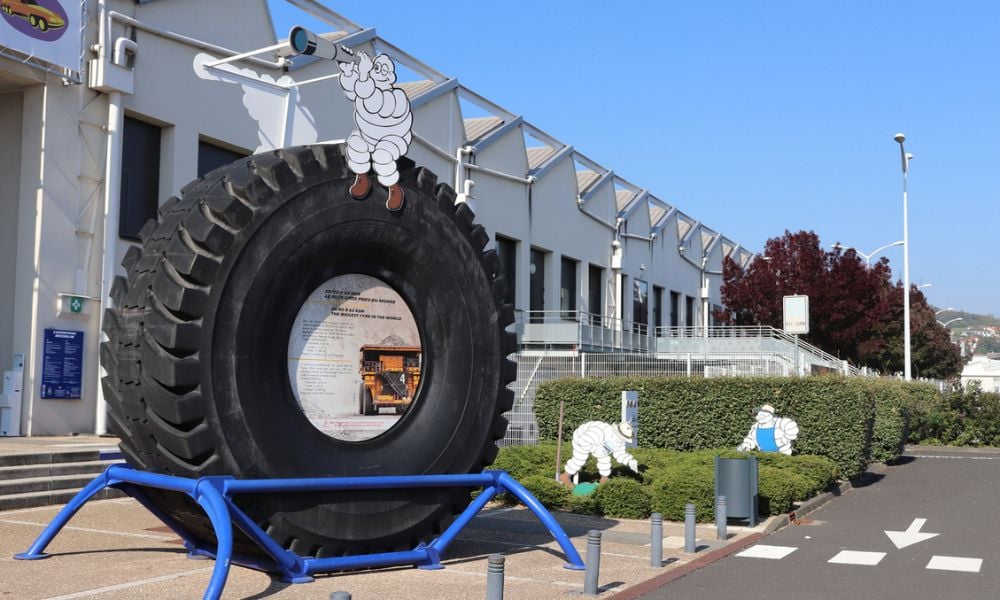The link between elite Formula One race teams and corporate teams is closer than you might think. Roland B Smith and Oliver Grohmann outline what the corporate world can learn from the high pressure, high stakes world of F1 racing.
The link between elite Formula One race teams and corporate teams is closer than you might think. Roland B Smith and Oliver Grohmann outline what the corporate world can learn from the high pressure, high stakes world of F1 racing.
The current economic environment demands clear vision, extraordinary leadership, high performance teamwork, strategic decision making and flawless execution in order to get ahead. The challenges faced by the most senior executives and their top teams are similar to the challenges of successful teams competing in Formula One racing.
While the spotlight often falls on the driver, highlighting capabilities, it is only through exploring the collaborative contributions of the broader network supporting the driver that we can gain insights into driving success in our organisations.
Chief balancers (CEOs and COOs)
The stars of F1 may be the drivers but team principals are the CEOs and COOs of Formula One racing. They not only have the ultimate accountability for things being done right but also for making sure the right things are done. They navigate a volatile, uncertain, complex and ambiguous world of challenges and changing demands that extend well beyond the race track. Managing top talent and personalities, leading high performance teams, and managing a myriad of supplier and customer relationships represent a small sample of these challenges. Alan Henry, a renowned F1 journalist, referred to the role of the Team Principal as the “balancer-in-chief”. Over time, new shared leadership models have emerged in order to address the need to balance multiple polarities while driving team success. This differentiates good from great performance.
As F1 has evolved over time and become big business, top leadership has also evolved. While many teams run with a variation of the team principal model, the Mercedes team has adopted a structure where the responsibilities are split between Executive Directors with distinct areas of responsibility: one handles the strategic and commercial aspects of the business while the other is responsible the technical and sporting aspects of the team, working in close liaison with each other. This structure allows the leadership to be strategically agile. While these leaders may delegate or defer decisions to members of their leadership team and other subject matter experts, they are collectively accountable for the success of the team in a race and over the season.
Senior leadership
The top team or senior managers that report to the chief balancers are all critical to overall success. As in any organization, each person has a unique functional job to play as well as an integrated role. These roles include titles such as CFO, Sporting Director, Technical Director, Operations Director, Head of Research and Development, and HR Director. While each needs to master their functional responsibility and deliver results in their respective areas, the ability of this group of people to work in a collaborative and interdependent manner leads to collective results that win races and achieve championships.
Their ability to put team first regardless of their individual or professional differences has a significant impact on team success.
Accelerators (HR)
In Formula One racing, there must be an underlying system of communication that regulates, aggregates and coordinates. While in the race, it is the Pit Wall guiding the hard work of the drivers and the Pit Crew. In business, this support often comes from the HR and Talent department. We refer to them as talent accelerators.
Accelerators must link strategic goals (racing ones and business-related ones) with respective skills and talents. In racing, as in business, it is never enough to simply have good employees. A crew of employees must understand what the race is about while executing and performing in the Pit. Increasingly the crew needs to be ready to act and at the same time be flexible and adaptable especially during the race. Crew members must be willing and capable of sustained performance, not only as individuals but as team members who are accountable for the overall success of the business. For leaders, the key is clear and consistent communication and coordination. In F1 racing, having a team of accelerators makes the difference.
The team network
In both racing and business the objective is to operate at maximum efficiency in an intensely dynamic, competitive and high-risk environment while managing similarly strong personalities and competing interests. While it may be easier to focus on getting the pole position or simply winning the race, the real prize is the elusive team championship.
In Formula One racing, this team championship is recognition of taking vision to reality and demonstrating sustainable performance over time. Achieving this success is testament to the fact that over 100 people associated with the team are capable of and have moved from a culture of independent achievers to interdependent collaborators – each, of course, talented and highly-driven in their own right.
While there is no doubt that the hyper competitive world of Formula One demands top talent behind the wheel while the car is on the track, this cannot and must not be the only factor for success. While racing, a pit crew is constantly on hand to support the driver during crucial pit stops, providing essential changes and provisions that ensure a smooth race ahead. While not racing, the driver falls further away from the spotlight, and it is an interdependent network of engineers, scientists, technicians and mechanics that come to the fore.
This complex network requires senior leadership who can provide direction, alignment and commitment (DAC) and satisfy the demands of the owners and a myriad of stakeholders. Understanding non driver roles will help the fan and non-fan alike in developing high impact teams and achieving peak performance in business.
So, who can help the team win the race? For a single race, the driver perhaps. For a sustainable winning streak, everyone on the team plays a critical part. This is the collective power of an effective team.
About the authors
Roland B Smith is Vice President and MD, Center for Creative Leadership (CCL). Oliver Grohmann is HR Director Daimler South East Asia Pte. Ltd.
The current economic environment demands clear vision, extraordinary leadership, high performance teamwork, strategic decision making and flawless execution in order to get ahead. The challenges faced by the most senior executives and their top teams are similar to the challenges of successful teams competing in Formula One racing.
While the spotlight often falls on the driver, highlighting capabilities, it is only through exploring the collaborative contributions of the broader network supporting the driver that we can gain insights into driving success in our organisations.
Chief balancers (CEOs and COOs)
The stars of F1 may be the drivers but team principals are the CEOs and COOs of Formula One racing. They not only have the ultimate accountability for things being done right but also for making sure the right things are done. They navigate a volatile, uncertain, complex and ambiguous world of challenges and changing demands that extend well beyond the race track. Managing top talent and personalities, leading high performance teams, and managing a myriad of supplier and customer relationships represent a small sample of these challenges. Alan Henry, a renowned F1 journalist, referred to the role of the Team Principal as the “balancer-in-chief”. Over time, new shared leadership models have emerged in order to address the need to balance multiple polarities while driving team success. This differentiates good from great performance.
As F1 has evolved over time and become big business, top leadership has also evolved. While many teams run with a variation of the team principal model, the Mercedes team has adopted a structure where the responsibilities are split between Executive Directors with distinct areas of responsibility: one handles the strategic and commercial aspects of the business while the other is responsible the technical and sporting aspects of the team, working in close liaison with each other. This structure allows the leadership to be strategically agile. While these leaders may delegate or defer decisions to members of their leadership team and other subject matter experts, they are collectively accountable for the success of the team in a race and over the season.
Senior leadership
The top team or senior managers that report to the chief balancers are all critical to overall success. As in any organization, each person has a unique functional job to play as well as an integrated role. These roles include titles such as CFO, Sporting Director, Technical Director, Operations Director, Head of Research and Development, and HR Director. While each needs to master their functional responsibility and deliver results in their respective areas, the ability of this group of people to work in a collaborative and interdependent manner leads to collective results that win races and achieve championships.
Their ability to put team first regardless of their individual or professional differences has a significant impact on team success.
Accelerators (HR)
In Formula One racing, there must be an underlying system of communication that regulates, aggregates and coordinates. While in the race, it is the Pit Wall guiding the hard work of the drivers and the Pit Crew. In business, this support often comes from the HR and Talent department. We refer to them as talent accelerators.
Accelerators must link strategic goals (racing ones and business-related ones) with respective skills and talents. In racing, as in business, it is never enough to simply have good employees. A crew of employees must understand what the race is about while executing and performing in the Pit. Increasingly the crew needs to be ready to act and at the same time be flexible and adaptable especially during the race. Crew members must be willing and capable of sustained performance, not only as individuals but as team members who are accountable for the overall success of the business. For leaders, the key is clear and consistent communication and coordination. In F1 racing, having a team of accelerators makes the difference.
The team network
In both racing and business the objective is to operate at maximum efficiency in an intensely dynamic, competitive and high-risk environment while managing similarly strong personalities and competing interests. While it may be easier to focus on getting the pole position or simply winning the race, the real prize is the elusive team championship.
In Formula One racing, this team championship is recognition of taking vision to reality and demonstrating sustainable performance over time. Achieving this success is testament to the fact that over 100 people associated with the team are capable of and have moved from a culture of independent achievers to interdependent collaborators – each, of course, talented and highly-driven in their own right.
While there is no doubt that the hyper competitive world of Formula One demands top talent behind the wheel while the car is on the track, this cannot and must not be the only factor for success. While racing, a pit crew is constantly on hand to support the driver during crucial pit stops, providing essential changes and provisions that ensure a smooth race ahead. While not racing, the driver falls further away from the spotlight, and it is an interdependent network of engineers, scientists, technicians and mechanics that come to the fore.
This complex network requires senior leadership who can provide direction, alignment and commitment (DAC) and satisfy the demands of the owners and a myriad of stakeholders. Understanding non driver roles will help the fan and non-fan alike in developing high impact teams and achieving peak performance in business.
So, who can help the team win the race? For a single race, the driver perhaps. For a sustainable winning streak, everyone on the team plays a critical part. This is the collective power of an effective team.
About the authors
Roland B Smith is Vice President and MD, Center for Creative Leadership (CCL). Oliver Grohmann is HR Director Daimler South East Asia Pte. Ltd.





